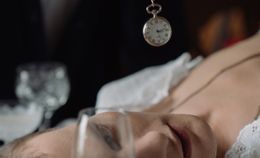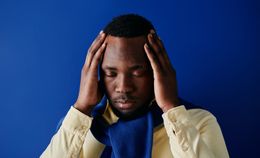In 2015 - 2016, the U.S center of education statistics reported that 6.7 million children and youths, representing 13 percent of all public school students, are receiving special education services. Additionally, 34 percent of this number had specific learning disabilities (LD).
That is a staggering percentage of children in schools today facing challenges every day, struggling to read, write, and negotiate in the world in a productive and acceptable way.
Luckily, there are many holistic and natural treatment options to help provide support in managing and relieving the symptoms of learning disabilities. One such treatment option is craniosacral therapy.
In this article, we are going to explore how craniosacral therapy can work for learning disabilities, its effectiveness, the number of recommended sessions, and potential costs.
9 Types of Learning Disabilities
Before we explore how craniosacral therapy works for learning disabilities, let us discover what is considered the nine learning disabilities.
The Learning Disabilities Association of America classifies LD into nine categories:
-
Auditory processing disorder (APD)
-
Dyscalculia
-
Dysgraphia
-
Dyslexia
-
Language Processing Disorder
-
Non-Verbal
-
Learning Disabilities
-
Visual Perceptual
-
Visual Motor Deficit
How Craniosacral Therapy Can Help with Learning Disabilities
Craniosacral therapy can help manage and help reduce the symptoms of different learning disabilities. It can help to do this through the realignment of the cranium and sacral structures and the release of any blockages in the cerebrospinal fluid. If you are not sure what cerebrospinal fluid is, it is the fluid that is found around the brain and spinal cord.
According to craniosacral therapy, when misalignments and restrictions are present, the body has challenges This therapy helps you gain a greater understanding of how the body works, as well as, maintain the highest level of wellness possible.
In essence, when there are misalignments and cerebrospinal fluid restrictions, craniosacral therapists view it as a possible reason for the severity of a child's or adult's learning disability symptoms.
Through craniosacral therapy sessions, realignment and blockages are released and re-aligned properly. This provides a decrease in symptoms, as well as, many other benefits for learning disabilities.
3 Ways Craniosacral Therapy can Benefit the Symptoms of Learning Disabilities
Here are three ways craniosacral therapy can benefit a child or adult living with a learning disability:
1. Natural balance: Craniosacral therapy can help the body gain a state of natural balance. This is important because when a craniosacral therapy practitioner finds structural compression or restrictions at the occipital cranial base, this can be indicative of hyperactivity symptoms associated with learning disabilities and challenges. Significant restrictions in the temporal bones may also be observed. When corrected and released, many have reported a change in the severity of their symptoms.
2. Dysgraphia: This learning disability impacts the physical ability to write. For children with dysgraphia, craniosacral therapy helps to reduce the tension in the hands and arms, which makes writing much easier.
3. Dyslexia and processing disorders: This learning disability impacts the visual ability to read, Children with this learning disability have difficulty with concentration and focus. This therapy helps the child moderate his or her reactions to auditory and sensory stimuli.
Craniosacral Therapy reduces tension patterns around the ears and eyes, In doing so, the regions of the brain responsible for processing language and other information functions more successfully.
How Many Sessions Might be Needed?
In a study involving a seven-year-old boy with dyslexia where craniosacral therapy was administered, a total of eight sessions was found to be the most effective.
After the first session, the child's reading level improved.
The child was identified with a tied-tongue. When the therapy was expanded to include craniosacral work around his tongue and related areas, he cried but didn't want the session stopped.
Interestingly, the child was unable to express the reasons why he was crying.
However, he became noticeably more light-spirited. There was improvement with his speech which became smoother and more concise.
As each case is uniquely different, the therapist will determine the number of sessions and the length it will take based on evaluation and feedback from your body.
Depending on the specific learning disability and the severity of symptoms, an individual's response may vary. The sessions are often three to ten in number, with each session lasting about one hour.
What Will Craniosacral Therapy for Learning Disabilities Cost?
Both children and adults experience living with a learning disability. The average price per session in the United States is $70-$170. This range is based on the average fees across the country that are associated with sessions for adults.
Often times, craniosacral therapy sessions for children are shorter than an hour, and practitioners take that into account when treating children. When seeking treatment for a child, always ask if a practitioner has experience working with children and if they offer different rates for children compared to adults.
For more information, read: How Much Does Craniosacral Therapy Cost?
References
Al-Mahrezi A., Al-Futaisi A., Al-Mamari W. (2016). Learning disabilities: Opportunities and challenges in Oman Sultan Qaboos University Medical Journal, Volume 16, 2016.
Al-Mahrezi, A., Al-Futaisi, A., & Al-Mamari, W. (2016). Learning Disabilities: Opportunities and challenges in Oman. Sultan Qaboos University medical journal, 16(2), e129-e131. doi:10.18295/squmj.2016.16.02.001. Retrieved April 18, 2019, from https://squ.pure.elsevier.com/en/publications/learning-disabilities-opportunities-and-challenges-in-oman
Annual Report: 2016. Disability Statistics & Demographics. Research on Disability Institute at the University of New Hampshire. Retrieved April 18, 2019, from https://disabilitycompendium.org/sites/default/files/user-uploads/2016_AnnualReport.pdf
Harstad, E. (n.d.). Are the learning issues in my family genetic? Retrieved April 18, 2018, from https://www.understood.org/en/family/siblings/multiple-children-learning-issues/are-the-learning-issues-in-my-family-genetic
National Center for Learning Disabilities. (2017). Snapshot of learning and attention issues in the U.S. Retrieved April 18, 2019, from https://www.ncld.org/wp-content/uploads/2017/03/1-in-5-Snapshot.Fin_.03142017.pdf
National Institute of Neurological Disorders and Stroke. (n.d.). Dyslexia information page. Retrieved April 18, 2019, from https://www.ninds.nih.gov/Disorders/All-Disorders/Dyslexia-Information-Page
Putting a Canadian Face on Learning Disabilities (PACFOLD), Learning Disabilities Association of Canada What are learning disabilities. Retrieved April 18, 2019, from www.pacfold.ca/about/index.shtml
The State of Learning Disabilities (Third Edition, 2014). (n.d.). Retrieved April 18, 2019, from https://vafamilysped.org/Resource/JWHaEa5BS75iaC3afMVNgw/Resource-the-state-of-learning-disabilities-third-edition-2014
The U.S center of education statistics. Retrieved April 18, 2019, from https://nces.ed.gov/programs/coe/indicator_cgg.asp
Types of Learning Disabilities. Retrieved April 29, 2019, from https://ldaamerica.org/types-of-learning-disabilities/















